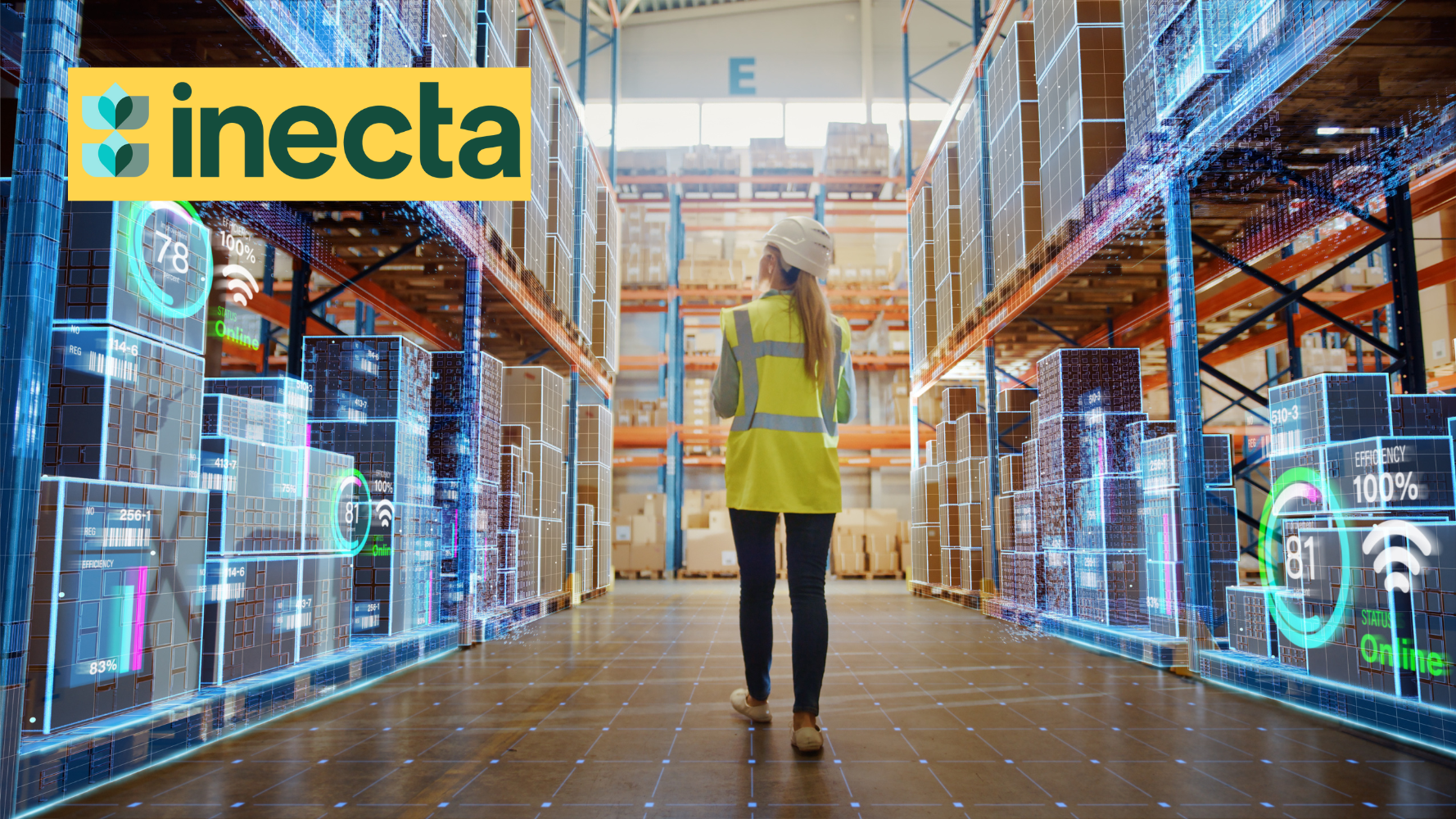B2B SaaS stands for Business-to-Business Software as a Service. It refers to a type of software delivery model where a company provides software applications or services to other businesses over the Internet. In this model, the software is hosted in the cloud, and customers can access and use it through a web browser without the need to install or maintain any software locally on their own servers.
B2B SaaS is typically designed to address the specific needs of businesses, providing solutions for various functions such as customer relationship management (CRM), human resources management, project management, accounting, marketing, and more. These software applications are often subscription-based, where customers pay a recurring fee to access and use the software.
The B2B SaaS model offers several advantages to businesses. It eliminates the need for organizations to purchase, install, and maintain software on their own infrastructure, reducing upfront costs and IT complexity. It also allows for scalability and flexibility, as businesses can easily add or remove users and features as needed. Additionally, B2B SaaS providers often offer regular updates and support to ensure their software is up-to-date and functioning properly.
Overall, B2B SaaS has become a popular choice for businesses of all sizes, as it provides cost-effective and efficient solutions to meet their software needs while allowing them to focus on their core operations.
What Are The Different Types of B2B SaaS?
There are numerous types of B2B SaaS applications available in the market, catering to various business functions and industries. Here are some examples of common types of B2B SaaS:
Customer Relationship Management (CRM):
These platforms help businesses manage their interactions and relationships with customers. Examples include Salesforce, HubSpot CRM, and Zoho CRM.
Enterprise Resource Planning (ERP):
ERP software integrates various core business processes such as finance, HR, inventory management, and supply chain management. Examples include SAP, Oracle NetSuite, and Microsoft Dynamics 365.
Human Resources Management (HRM):
HRM software helps streamline and automate HR-related tasks such as employee onboarding, payroll, benefits administration, and performance management. Examples include Workday, BambooHR, and ADP Workforce Now.
Project Management:
Project management software assists in planning, organizing, and tracking project tasks and collaboration. Examples include Asana, Trello, and Monday.com.
Accounting and Financial Management:
These applications help businesses manage their financial transactions, bookkeeping, invoicing, and budgeting. Examples include QuickBooks, Xero, and FreshBooks.
Marketing Automation:
Marketing automation platforms enable businesses to automate and manage marketing campaigns, lead nurturing, email marketing, and analytics. Examples include Marketo, HubSpot Marketing Hub, and Pardot.
Communication and Collaboration:
These tools facilitate team communication, file sharing, and collaboration. Examples include Slack, Microsoft Teams, and Google Workspace.
Customer Support and Help Desk:
Help desk software allows businesses to manage customer support tickets, provide self-service options, and track customer inquiries. Examples include Zendesk, Freshdesk, and Intercom.
E-commerce and Online Retail:
E-commerce platforms help businesses sell products or services online, manage inventory, process payments, and handle customer orders. Examples include Shopify, Magento, and WooCommerce.
These are just a few examples, and there are many more B2B SaaS applications available in different industries and business functions, tailored to meet specific needs and requirements.
What's the Difference Between B2B and B2C Software?

B2B (Business-to-Business) and B2C (Business-to-Consumer) software refer to two different types of software applications that cater to distinct market segments. Here are the key differences between B2B and B2C software:
Target Audience:
B2B software is designed for businesses and organizations as the primary users and customers. It addresses the specific needs and requirements of businesses in various industries. B2C software, on the other hand, targets individual consumers as the primary users and customers.
Use Cases:
B2B software focuses on facilitating business operations, improving efficiency, and supporting specific business functions or processes. It often includes applications for enterprise resource planning (ERP), customer relationship management (CRM), supply chain management (SCM), collaboration tools, and other solutions tailored for businesses. B2C software, on the other hand, is typically consumer-centric and serves purposes such as entertainment, communication, e-commerce, personal finance, and lifestyle applications.
Complexity and Scalability:
B2B software tends to be more complex and feature-rich, accommodating the needs of businesses that operate on larger scales. It often requires integration with existing systems, customization, and support for complex workflows. B2C software, in comparison, is often designed to be user-friendly, easily accessible, and scalable to handle a high volume of individual users.
Sales and Marketing Channels:
B2B software is typically marketed and sold through direct sales, partnerships, and targeted marketing campaigns aimed at businesses and decision-makers within organizations. B2C software, on the other hand, often employs a wider range of distribution channels, including app stores, online marketplaces, and direct-to-consumer marketing strategies.
Pricing and Licensing Models:
B2B software commonly follows a subscription-based or usage-based pricing model, tailored to the specific needs and scale of businesses. Pricing structures often involve tiered plans or enterprise-level agreements. B2C software, in contrast, may employ various pricing models, including one-time purchases, freemium models, or in-app purchases.
User Experience:
B2B software places emphasis on meeting business requirements and may prioritize functionality and integration capabilities over aesthetic design. User experience in B2B software focuses on efficiency, productivity, and ease of use for professional users. B2C software, on the other hand, emphasizes user-friendly interfaces, engaging design, and intuitive user experiences tailored to individual consumers.
While there are distinct differences between B2B and B2C software, it's worth noting that there can be some overlap or hybrid models where software solutions cater to both business and consumer needs. Additionally, some B2B software providers may offer B2C-facing components or interfaces as part of their overall offerings.
What Kinds of Businesses Leverage B2B SaaS and Why?
Various types of businesses across different industries can benefit from using B2B SaaS solutions. Here are some examples of businesses that commonly require B2B SaaS and the reasons why:
Small and Medium-sized Enterprises (SMEs):
SMEs often have limited resources and budgets. B2B SaaS allows them to access powerful software tools without the need for significant upfront investments in infrastructure and software licenses. It provides them with cost-effective solutions for functions like CRM, project management, accounting, and more.
Startups and Scalable Businesses:
Startups and rapidly growing businesses require scalable solutions that can adapt to their changing needs. B2B SaaS offers the flexibility to easily add or remove users, features, and services as the business evolves. It allows them to scale up or down quickly without the burden of managing hardware or software updates.
Remote and Distributed Teams:
With the rise of remote work and distributed teams, businesses need software that enables collaboration and communication across different locations. B2B SaaS tools for project management, communication, and file sharing facilitate seamless collaboration regardless of team members' physical locations.
Sales and Marketing Teams:
Sales and marketing departments benefit from B2B SaaS CRM and marketing automation tools that help manage leads, track customer interactions, automate marketing campaigns, and generate insights for better decision-making. These tools streamline processes, improve efficiency, and enhance customer engagement.
Customer Support and Service:
Businesses that provide customer support or service can leverage B2B SaaS help desk and customer support solutions. These tools help manage support tickets, provide self-service options, track customer inquiries, and improve response times, enhancing customer satisfaction.
E-commerce and Online Retail:
B2B SaaS e-commerce platforms enable businesses to set up and manage online stores, process payments, track inventory, and offer personalized shopping experiences. These solutions help businesses expand their reach, improve customer experience, and increase sales.
Financial Management:
B2B SaaS accounting and financial management software simplify financial processes such as bookkeeping, invoicing, expense management, and financial reporting. It enables businesses to track finances accurately, manage cash flow, and make informed financial decisions.
These are just a few examples, but B2B SaaS can be applicable to businesses of all sizes and industries, providing them with flexible, cost-effective, and efficient software solutions to streamline operations, improve productivity, and drive growth.

How Long Has B2B SaaS Been Around?
The concept of B2B SaaS emerged with the advent of the Software as a Service (SaaS) model, which gained popularity in the early 2000s. While B2B software delivery and cloud-based solutions have been around for many years, the specific term "B2B SaaS" began to be widely used around that time.
The early pioneers of B2B SaaS include companies like Salesforce, which was founded in 1999 and is considered one of the first successful B2B SaaS providers. Salesforce introduced cloud-based CRM software, challenging the traditional on-premises software deployment model.
Over the years, the B2B SaaS market has expanded significantly, driven by advancements in cloud computing, increased internet connectivity, and the growing demand for scalable and cost-effective software solutions. Today, B2B SaaS has become a thriving industry, with numerous providers offering various software applications tailored to various business functions and industries.
How Can Businesses Acquire B2B SaaS?
Companies can acquire B2B SaaS through several methods, depending on the specific software and provider. Here are some common ways for companies to acquire B2B SaaS:
Direct Purchase from the Vendor:
Many B2B SaaS providers have their own websites or sales teams through which companies can directly purchase their software. Companies can visit the provider's website, explore the available products or solutions, and make a purchase online or get in touch with the sales team to discuss their requirements and negotiate pricing.
Free Trials and Freemium Models:
Some B2B SaaS providers offer free trials or freemium models, allowing companies to try out the software before purchasing. Free trials typically have a limited duration, during which companies can test the software's features and evaluate its suitability for their needs. Freemium models provide a basic version of the software for free, with additional premium features available for purchase.
Online Marketplaces:
Online marketplaces and app stores dedicated to business software, such as Salesforce AppExchange, Microsoft AppSource, and the Shopify App Store, offer a wide range of B2B SaaS applications. Companies can browse through the available options, read reviews, and make purchases directly from the marketplace platform.
Partner Resellers:
Some B2B SaaS providers work with partner resellers or consulting firms specializing in software sales and implementation. Companies can engage with these resellers to get expert advice, explore different software options, and make a purchase through them. Resellers often provide additional services such as implementation, training, and support.
Integration with Other Platforms:
In some cases, companies can acquire B2B SaaS through integrations with other platforms they already use. For example, a project management tool might offer integrations with other software applications, allowing companies to access and purchase those integrations directly from within the primary tool.
It's important for companies to thoroughly evaluate their needs, consider factors like pricing, features, scalability, security, and support, and conduct due diligence on the software provider before making a purchase. Additionally, companies should ensure that the B2B SaaS aligns with their IT infrastructure, integration requirements, and compliance regulations.
B2B SaaS and User Experience
B2B SaaS applications strive to provide a user-friendly experience, but the level of user-friendliness can vary depending on the specific software and its design. Here are some factors that can influence the user-friendliness of B2B SaaS applications:
Intuitive User Interface (UI):
B2B SaaS applications with intuitive and user-friendly UI designs make it easier for users to navigate and interact with the software. Clear and organized menus, well-labeled buttons, and logical workflows contribute to a positive user experience.
User Onboarding and Training:
B2B SaaS providers often offer user onboarding materials, tutorials, and training resources to help users get started and become familiar with the software. Effective onboarding processes and comprehensive training materials can significantly improve the application's user-friendliness.
Customization and Personalization:
B2B SaaS applications that allow users to customize their experience based on their preferences and needs tend to be more user-friendly. Features like customizable dashboards, personalized settings, and role-based access control contribute to a more tailored and intuitive user experience.
Responsive Design and Cross-Platform Compatibility:
User-friendliness is enhanced when B2B SaaS applications have a responsive design, adapting to different screen sizes and devices. Mobile-friendly interfaces and cross-platform compatibility allow users to access and use the software seamlessly across various devices, contributing to a user-friendly experience.
User Support and Documentation:
B2B SaaS providers that offer responsive and accessible customer support, as well as comprehensive documentation, contribute to the user-friendliness of their applications. Prompt and helpful support channels, such as live chat, email support, or knowledge bases, can assist users in overcoming any challenges they may encounter.
User Feedback and Iterative Improvements:
B2B SaaS providers that actively collect and incorporate user feedback into their software development process tend to improve the user-friendliness of their applications over time. Regular updates and iterative improvements based on user input can enhance usability and address pain points.
While B2B SaaS applications strive to be user-friendly, it's important to note that user experience can vary between different software providers and applications. It is advisable for businesses to thoroughly evaluate the user-friendliness of a B2B SaaS application during the evaluation and selection process, considering factors such as ease of use, training resources, customization options, and available support channels.

How Are ERP and B2B SaaS Connected?
ERP (Enterprise Resource Planning) systems can be related to B2B SaaS in several ways:
ERP as a B2B SaaS Solution:
Many ERP software providers offer their solutions through the B2B SaaS model. Instead of companies installing and managing the ERP software on their own servers, they can access and use the ERP system through a web browser as a cloud-based service. This eliminates the need for companies to handle infrastructure, maintenance, and software updates, as the ERP provider takes care of those aspects.
Benefits of ERP B2B SaaS:
B2B SaaS ERP solutions offer several advantages to businesses. They provide flexibility and scalability, allowing companies to easily add or remove users, modules, or features as needed. The subscription-based pricing model of B2B SaaS ERP often reduces upfront costs, making it more accessible for small and medium-sized businesses. It also enables remote access, collaboration, and real-time data synchronization across different locations and departments.
Integration with Other B2B SaaS Applications:
ERP systems often need to integrate with other B2B SaaS applications to streamline processes and data exchange. For example, an ERP system might integrate with a B2B SaaS CRM (Customer Relationship Management) system to synchronize customer data and improve visibility across sales, marketing, and finance functions. These integrations help create a cohesive and connected ecosystem of software applications within a company.
Extended Functionality through B2B SaaS Add-ons:
Some ERP providers offer B2B SaaS add-ons or extensions that extend the capabilities of the core ERP system. These add-ons might address specific industry requirements, such as manufacturing, supply chain management, or project management. Companies can leverage these add-ons to customize their ERP system and enhance their functionality according to their specific business needs.
In summary, ERP systems can be delivered as B2B SaaS solutions, providing businesses with cloud-based access to comprehensive and integrated software for managing various aspects of their operations. B2B SaaS ERP solutions offer flexibility, scalability, and streamlined integration possibilities with other B2B SaaS applications, contributing to improved efficiency and productivity within organizations.
How Does the Food Industry Leverage B2B SaaS?
Yes, the food industry does utilize B2B SaaS solutions to streamline operations, enhance efficiency, and improve customer experiences. B2B SaaS applications are used across different segments of the food industry, including restaurants, food manufacturing, distribution, and supply chain management. Here are some examples of how B2B SaaS is applied in the food industry:
Restaurant Management:
B2B SaaS solutions are employed in restaurant operations to manage reservations, table management, order taking, point-of-sale (POS) systems, inventory management, and workforce scheduling. These applications help optimize restaurant processes, improve customer service, and provide insights into sales and inventory data.
Food Delivery and Online Ordering:
B2B SaaS platforms are used for online food ordering and delivery management. These solutions facilitate the creation of online menus, order processing, dispatching delivery drivers, and tracking orders. They are often integrated with POS systems and provide real-time analytics to monitor performance and customer satisfaction.
Food Safety and Compliance:
B2B SaaS software is used to manage food safety and compliance standards. These applications help food businesses track and maintain food safety protocols, monitor temperatures, manage recalls, and ensure compliance with regulatory requirements. They enable efficient record-keeping, quality control, and traceability throughout the food supply chain.
Supply Chain Management:
B2B SaaS solutions are utilized in food manufacturing, distribution, and logistics to optimize supply chain processes. These applications assist in inventory management, demand forecasting, procurement, production planning, and warehouse management. They enable businesses to improve efficiency, reduce waste, and ensure timely delivery of products.
Quality Control and Traceability:
B2B SaaS platforms are employed to monitor and manage quality control in the food industry. They enable businesses to track ingredients, manage product specifications, perform inspections, and maintain records to ensure compliance with quality standards. These solutions also support traceability, allowing for the identification and recall of products in the event of safety concerns.
Overall, B2B SaaS solutions play a significant role in enhancing operational efficiency, compliance, customer service, and supply chain management within the food industry. They help businesses address specific industry challenges, improve productivity, and deliver better customer experiences.

How Do Food Manufacturers Utilize B2B SaaS Specifically?
Food manufacturers leverage B2B SaaS (Software as a Service) solutions in various ways to streamline their operations, enhance efficiency, and address specific challenges within the industry. Here are some ways food manufacturers utilize B2B SaaS.
Production Planning and Scheduling:
B2B SaaS platforms are used for production planning and scheduling, enabling manufacturers to optimize their production processes. These solutions help with demand forecasting, raw material planning, production line scheduling, and resource allocation. They provide visibility into production capacity, assist in minimizing downtime, and improve overall production efficiency.
Recipe Management and Formulation:
B2B SaaS applications are employed to manage recipe formulation and ensure consistency in food manufacturing. These solutions help manufacturers track and document ingredient quantities, manage recipe versions, calculate nutritional information, and automate the scaling of recipes. They facilitate accurate ingredient sourcing and enable manufacturers to maintain product consistency and quality.
Quality Control and Compliance:
B2B SaaS platforms are used for quality control and compliance management in food manufacturing. These applications assist in managing product specifications, conducting quality inspections, tracking supplier performance, and maintaining records for regulatory compliance. They help manufacturers ensure adherence to food safety standards, perform audits, and handle product recalls effectively.
Inventory Management:
B2B SaaS solutions are employed for inventory management in food manufacturing. These platforms provide real-time visibility into inventory levels, facilitate tracking of raw materials and finished goods, and enable efficient stock replenishment. They help optimize inventory levels, reduce waste, and ensure the timely availability of materials for production.
Supplier and Vendor Management:
B2B SaaS applications are utilized for supplier and vendor management in the food manufacturing industry. These platforms help manufacturers manage supplier relationships, track performance metrics, streamline procurement processes, and ensure timely delivery of raw materials. They assist in maintaining supplier information, negotiating contracts, and managing vendor documentation.
Traceability and Recall Management:
B2B SaaS solutions support traceability and recall management in food manufacturing. They enable manufacturers to track ingredients from suppliers, record batch and lot information, and establish a clear audit trail. In the event of a product recall, these platforms assist in identifying affected batches, notifying customers, and managing the recall process efficiently.
By leveraging B2B SaaS solutions, food manufacturers can improve operational efficiency, enhance product quality and safety, optimize inventory management, and ensure compliance with industry regulations. These solutions contribute to streamlined processes, better resource utilization, and increased customer satisfaction within the food manufacturing sector.
inecta is a provider of ERP software that is considered essential to certain industries. With a specific emphasis on the food sector, inecta is a provider of Microsoft-powered ERP solutions designed to streamline the various operational processes necessary to sustain businesses. To learn more about how B2B SaaS in the form of ERP can benefit your business, click here to schedule a demo with one of inecta's dedicated ERP experts.











Free Valuable Resource!
3 simple steps to find your Food ERP
Free Valuable Resource!
3 simple steps to find your Food ERP
*We will never sell your information. Keeping your data and privacy secure is our highest concern.